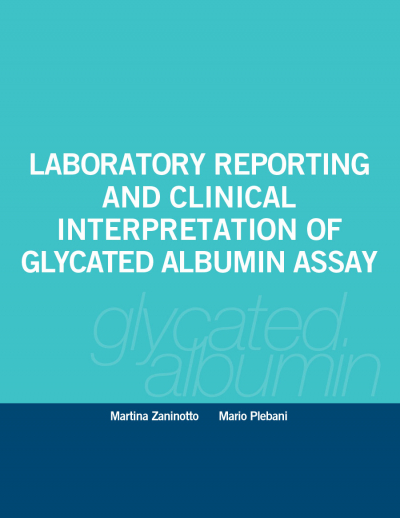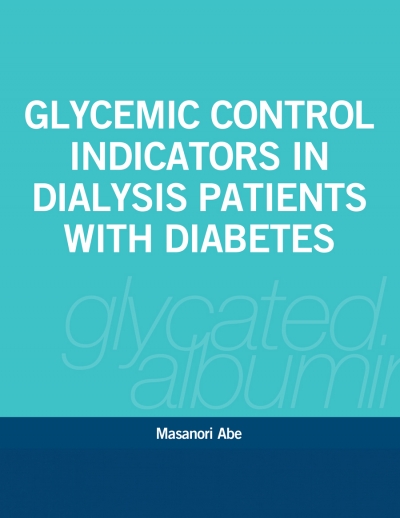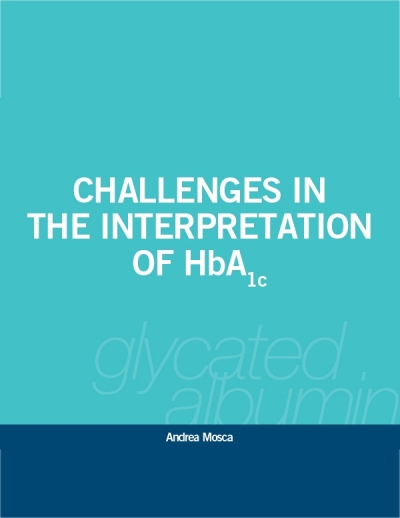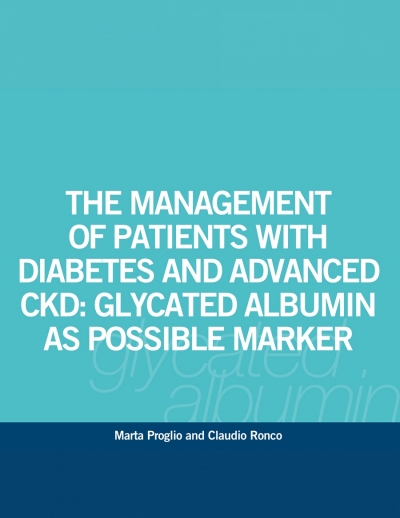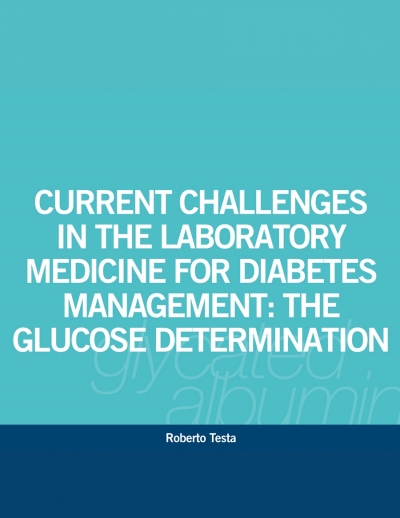White Papers
- Author Martina Zaninotto, Mario Plebani
- Year 2023
Keywords
Laboratory reporting for an appropriate clinical interpretation of Glycated Albumin results requires different comparators according to the specific scenario.
The laboratory report for diagnosis and prognostication should include the appropriate reference interval and optimal cut-points. For patient monitoring, the laboratory report should include the Reference Change Value (RCV), it assures a better clinical information in comparison to reference interval and decision limits.
The laboratory report for diagnosis and prognostication should include the appropriate reference interval and optimal cut-points. For patient monitoring, the laboratory report should include the Reference Change Value (RCV), it assures a better clinical information in comparison to reference interval and decision limits.
- Author Andrea Mosca
- Year 2021
Gestational diabetes mellitus (GDM) is the most common disorder in pregnancy and, if undetected, may lead to severe outcomes for the mother and the foetus. Glycated haemoglobin, which is still the gold standard for monitoring glucose excursions is not appropriate for monitoring rapid glycemic changes during pregnancy. In this case, Glycated Albumin may represent a valuable instrument to test for glucose intolerance during pregnancy.
- Author Masanori Abe
- Year 2021
Glycated Albumin reflects glycemic control more accurate than HbA1c in hemodialysis patients with diabetes. In dialysis patients, the HbA1c value underestimates glycemic condition because of the shortening the erythrocyte life span and erythropoiesis-stimulating agent (ESA) administration. In Japan, several observational studies have shown an association between GA levels and outcome in hemodialysis patients with diabetes.
- Author Masanori Abe
- Year 2021
Glycemic control in dialysis patients with diabetes affects the development and progression of not only diabetic microvascular complications but also macrovascular complications and infectious diseases.HbA1c is the most common glycemic control indicator indiabetes patients. In dialysis patients, the HbA1c value underestimates glycemic condition because of the shortening the erythrocyte lifespan and erythropoiesis-stimulating agent (ESA) administration. On the other hand, Glycated Albumin (GA) is reported as an alternative indicator because it is not affected by erythrocyte lifespan and ESA administration. Best Practice for Diabetic Patients on Hemodialysis 2012 in Japan recommends that a pre-dialysis casual blood glucose and GA are used on hemodialysis patients for better glycemic marker than HbA1c. GA can reflect glycemic control more accurate than HbA1c in hemodialysis patients with diabetes.
- Author Elena Dozio
- Year 2020
Advanced glycation end-products (AGE) and their cellular receptors (RAGE) are involved in the onset and progression of many diseases. AGE may promote detrimental effects both via their own receptors and irrespective of RAGE activation. Increased levels of AGE have been observed in hyperglycaemia and impaired renal function. The physiopathological role of the AGE-RAGE system has been well documented and studies have shown how it can be used in diagnostics.
- Author Marcello Ciaccio
- Year 2019
Glycated Albumin is a good short-term biomarker for glycaemic control in patients with diabetic nephropathy, particularly in conditions where HbA1c is less effective. Glycated Albumin has shown good diagnostic accuracy in the diagnosis of diabetes. The clinical use of Glycated Albumin should be considered complementary to HbA1c in various pathophysiological conditions, such as diabetic nephropathy patients.
- Author Andrea Mosca
- Year 2019
HbA1c is the most important parameter for monitoring glycaemic control, but in certain circumstances the result is not easy to determine. In these cases, a different approach involving the retrospective evaluation of glycaemic control, based on the measurement of various glycated proteins, such as albumin, is required.
- Author Marta Proglio and Claudio Ronco
- Year 2018
Diabetes and chronic kidney disease are often associated. In patients with stage 3 CKD or higher, HbA1c has shown some limitations. In these circumstances, Glycated Albumin (GA) has been found to be more reliable, particularly in haemodialysis patients, and useful for evaluating short-term treatment efficacy.
- Author Elena Dozio
- Year 2018
Glycated Albumin (GA) reflects the average blood glucose levels over the 2 - 3 weeks prior to blood sampling, can be used to assess fluctuating blood glucose levels and allows for prompt therapeutic monitoring. GA is useful in certain clinical conditions such as abnormal erythrocyte half-life, pregnancy and end stage renal disease.
- Author Roberto Testa
- Year 2018
Diagnostic errors may lead to delayed diagnosis or misdiagnosis. The automated methods routinely performed in laboratories normally adhere to very strict criteria with very low analytical variability. Some pre-analytical errors cannot be completely avoided during the collection process, but could be prevented with diligent quality control, continuing education and an effective sample collection system.
- Author Takuji Kohzuma
- Year 2017
Glycated Albumin (GA) is a new intermediate glycaemic control marker for diabetic patients. GA could be a complementary test to HbA1c for glycaemic control management.
GA is measured using a combination of the GA enzymatic method and the modified BCP method for measuring GA.
GA is measured using a combination of the GA enzymatic method and the modified BCP method for measuring GA.




